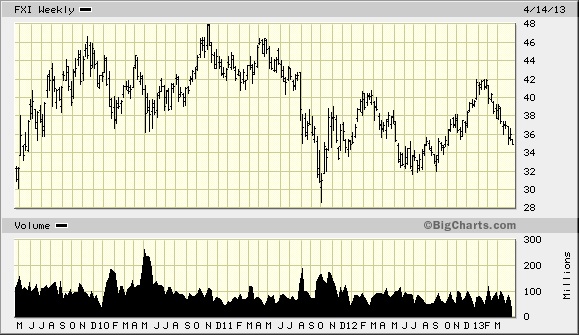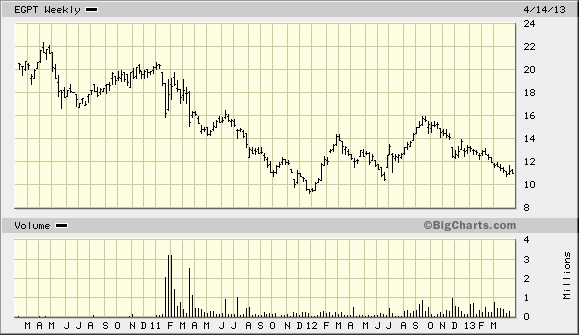The Next Great War and The 24-Year Cycle
The threat of war against the United States is making headlines and roiling investors’ nerves. While full-scale war is likely not imminent, it’s something worth considering in light of where we stand in the long-term War Cycle.
North Korea has stolen the geopolitical spotlight in recent weeks after making military threats against both the U.S. and South Korea. North Korea is the target of UN sanctions in response to a nuclear weapons test performed by the country in February. In reference to the test a spokesman for North Korea’s Foreign Ministry declared the nation has a right to initiate “a preemptive nuclear attack to destroy the strongholds of the aggressors.”
Most recently, North Korea said it had final approval to launch “merciless” military strikes on the U.S. South Korea’s defense minister said North Korea had moved a missile with “considerable range” to its east coast. North Korea recently announced it would cancel all nonaggression pacts with the South, according to the Los Angeles Times.
The obstreperous saber-rattling by North Korea’s supreme leader, Kim Jong Un, seems to have gone beyond the boundaries of idle threats. Are we to fear an outbreak of war involving North and South Korea – and possibly the U.S. – in the near future?
To answer this question we need first to realize where we are in the context of the 24-year cycle. This particular cycle, a subset of the Kress 120-year cycle, has been identified as the long-term “war cycle” among industrialized countries. The most recent 24-year cycle bottom occurred in October 1990. This ended a vicious bear market for the stock market. The banking sector was particularly hard hit by this particular 24-year cycle as 1990 was the worst part of the infamous S&L crisis and saw the failure of more than 100 small banks. The 24-year cycle bottom of 1990 marked the beginning of the great 1990s bull market, which extended until early 2000.
Since 1894 when the previous 120-year Grand Super Cycle bottomed and a new one began, there have been four military conflagrations at each subsequent bottom of the 24-year cycle. Most of these wars have been major in scope. The first such instance of war occurred in the years leading up to 1918, which saw the first 24-year cycle bottom of the current 120-year cycle. The 24-year cycle that bottomed that year saw the ending to the First World War. Remembering that the final “hard down” phase of the 24-year cycle approximates to almost two-and-a-half years, this represented roughly the second half of that major war, a war that involved the United States.
The next 24-year cycle bottom occurred in 1942. This year represented the United States’ entry into the Second World War against Japan and the Axis Powers. Both the 1918 and the 1942 cycle bottom years proved vicious in terms of military conflicts on the global scale.
Following the 1942 bottom, the next 24-year cycle bottom occurred in 1966 as previously discussed. This was a particularly harsh year in the Vietnam War in terms of the United States’ involvement. Following the 1965 National Liberation Front attack on two American military installations, President Lyndon Johnson ordered the continuous bombing of North Vietnam.
As I observed in my book, The Stock Market Cycles, “The final 24-year cycle bottom within the current 120-year cycle will occur around late September/early October in 2014. If history repeats, the period [around] year 2014 can be expected to usher in another major war involving the U.S., possibly on the global scale.”
Now consider the economic context behind North Korea’s belligerence. The country can easily be described as having an “extractive” economy, in the words of Daron Acemoglu and James A. Robinson, authors of Why Nations Fail. The authors use North Korea as a prime example of an exploitative economic regime in which private property doesn’t exist and the state makes all the economic decisions. North Korea doesn’t trade with most of the rest of the world because of its limited production. The country is littered with broken down factories, with few of them in working order.
As with most communist nations, the elites in North Korea are sitting pretty at the expense of the average citizen. They eat at lavish banquets with multi-course meals of beef, fine wine, etc., while the rest of the country subsists on rice and scanty fare. North Korea feeds itself mainly through the charity of other nations.
Because of North Korea’s limited economy and its dependence on outside sources to finance the party elites, the latest gambit by Kim Jong Un can be placed in its proper context. Kim is, in the words of the Washington Post, “playing an old and familiar game” by manufacturing a crisis atmosphere in the hope that the U.S. will eventually give him more economic aid. As many military experts have pointed out, Kim’s threats would be suicidal if actually carried out. It is very unlikely the young leader possesses such a high level of insanity.
Another reason for questioning the seriousness of Kim’s threats is the fact that military action has been largely discounted by the equity market. The major indices have been hovering near new all-time highs during the last couple of weeks at the time of Kim’s threats. Would this be the case if the tape – which tells all – strongly believed Kim’s promise to carry out a missile strike?
More importantly, the ultimate fear gauge – gold – is showing a complete lack of concern for North Korea’s threat. Gold has recently broken down to a new 52-week low and recently had its worst two-day performance in 33 years. This is as far from confirming the Korean strike scenario as any leading indicator.
North Korea’s threats can be ascribed to the singular frustration arising from the country’s worsening economic condition. North Korea’s frustration, moreover, is reflected in the declining fortunes of its neighbors and trading partners – South Korea, Russia and China. While we should question the legitimacy of those threats in the short term, the threats cannot be completely dismissed, for it could represent the early rumblings of major trouble to come in Asia in the longer term – notably the period beyond 2014.
Notice, for instance, that China’s stock market has been locked up in a bear market since 2011. The long-term weekly chart for the iShares China 25 ETF (FXI) reflects a pattern of declining tops for China stocks that has been intact since the peak in late 2010. Historically, periods of social unrest – which usually lead to war – are gestated in a period of economic stagnation. Economic stagnation is normally preceded by equity market weakness. The stock market trends for China, India and South Korea suggest a period of Asian regional economic stagnation has either begun or is soon forthcoming.

The flagging equities trend in the Asia region also suggests the sociopolitical climate is ripe for revolutionary fervor of the type we saw in Egypt and some of the Arab countries a couple of years ago. The declining trend for Egypt’s stock market (below) began well before the so-called “Arab Spring” revolutions commenced in 2011. Most expressions of violence, whether military or of the people, are born during periods of economic stagnation near the bottom of a major down cycle.

What the stock market indices for the major Asian countries tell us is that the region is ripe for a militant uprising of the type we’re now seeing in North Korea. With the 24-year cycle of war due to bottom in late 2014 it should not surprise us to see a potential outbreak of war as we head closer to this fateful time frame.
********
2014: America’s Date With Destiny
Take a journey into the future with me as we discover what the future may unfold in the fateful period leading up to – and following – the 120-year cycle bottom in late 2014.
Picking up where I left off in my previous work, The Stock Market Cycles, I expand on the Kress cycle narrative and explain how the 120-year Mega cycle influences the market, the economy and other aspects of American life and culture. My latest book, 2014: America’s Date With Destiny, examines the most vital issues facing America and the global economy in the 2-3 years ahead.
The new book explains that the credit crisis of 2008 was merely the prelude in an intensifying global credit storm. If the basis for my prediction continue true to form – namely the long-term Kress cycles – the worst part of the crisis lies ahead in 2014. The book is now available for sale at:
http://www.clifdroke.com/books/destiny.html
Order today to receive your autographed copy and a FREE 1-month trial subscription to the Gold & Silver Stock Report newsletter.
Clif Droke is the editor of Gold & Silver Stock Report, published each Tuesday and Thursday. He is also the author of numerous books, including most recently, “2014: America’s Date With Destiny.” For more information visit www.clifdroke.com
















